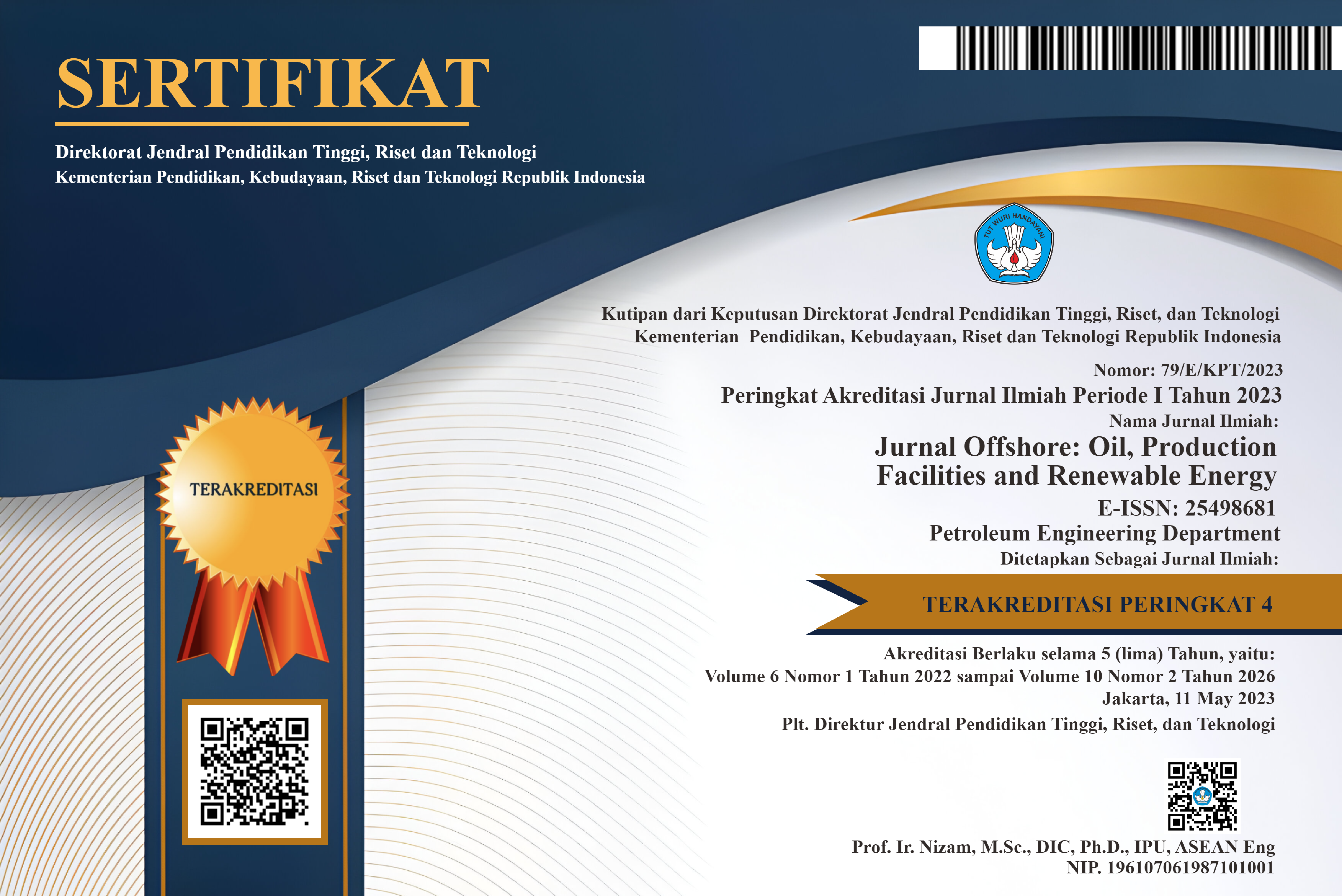Cut-Off Determination Based On Well Log and Economics, Betung Field Jambi Sub-Basin, South Sumatera Basin
DOI:
https://doi.org/10.30588/jo.v6i2.1456Keywords:
cut-off, petrophysic, well logAbstract
The Betung Field is one of the oil and gas fields located in the Jambi Sub-Basin, South Sumatra Basin with the target of the Air Benakat Formation sandstone reservoir. The cut off value is determined based on the character of the reservoir to eliminate non-contributing rock volumes. Economically, the cut-off value of oil production can be calculated by oil prices and budgeted total costs. There are 4 layers (L-2, L-3, L-4 and L-5), where Layer 5 (L-5) is the research focus in the cut-off determination method. The methodology in this cut-off study used qualitative and quantitative analysis in three (3) wells out of ten (10) wells L-5 in the Betung Field. The primary data used are well logs, production data and economic data. The well log data is processed to obtain the petrophysical value of the wells. The petrophysical results will be analyzed and the cut-off will be determined for each well and layer in L-5. Production and economic data are processed to obtain cut-off clay content (Vclay) which aims to strengthen the cut-off results from petrophysical yields. Based on the results of calculations and analysis, layer five (1-5), the Betung Field has a cut-off clay content (Vclay) < 34.2%; porosity > 15.8%, water saturation < 83.3%.
Downloads
Published
How to Cite
Issue
Section
License
Authors retain copyright and grant the Jurnal Offshore right of first publication with the work simultaneously licensed under a Creative Commons Attribution 4.0 International License that allows others to share (copy and redistribute the material in any medium or format) and adapt (remix, transform, and build upon the material) the work for any purpose, even commercially with an acknowledgement of the work's authorship and initial publication in Jurnal Offshore. Authors are able to enter into separate, additional contractual arrangements for the non-exclusive distribution of the journal's published version of the work (e.g., post it to an institutional repository or publish it in a book), with an acknowledgement of its initial publication in Jurnal Offshore. Authors are permitted and encouraged to post their work online (e.g., in institutional repositories or on their website) prior to and during the submission process, as it can lead to productive exchanges, as well as earlier and greater citation of published work (See The Effect of Open Access).















